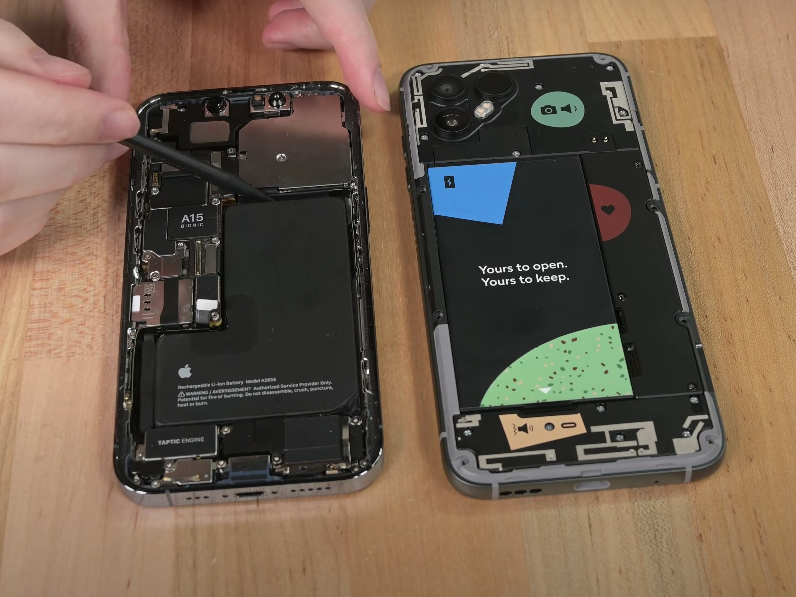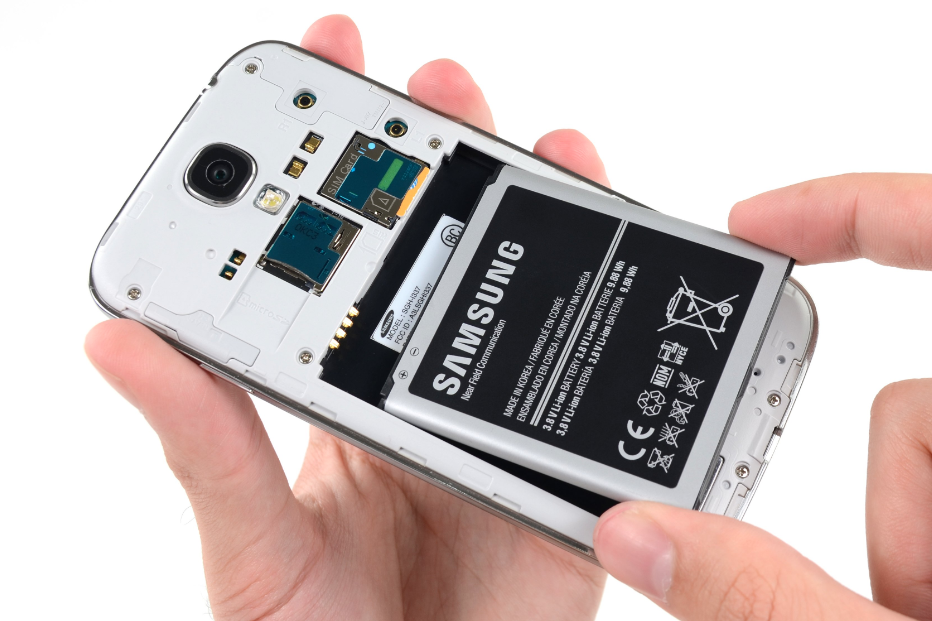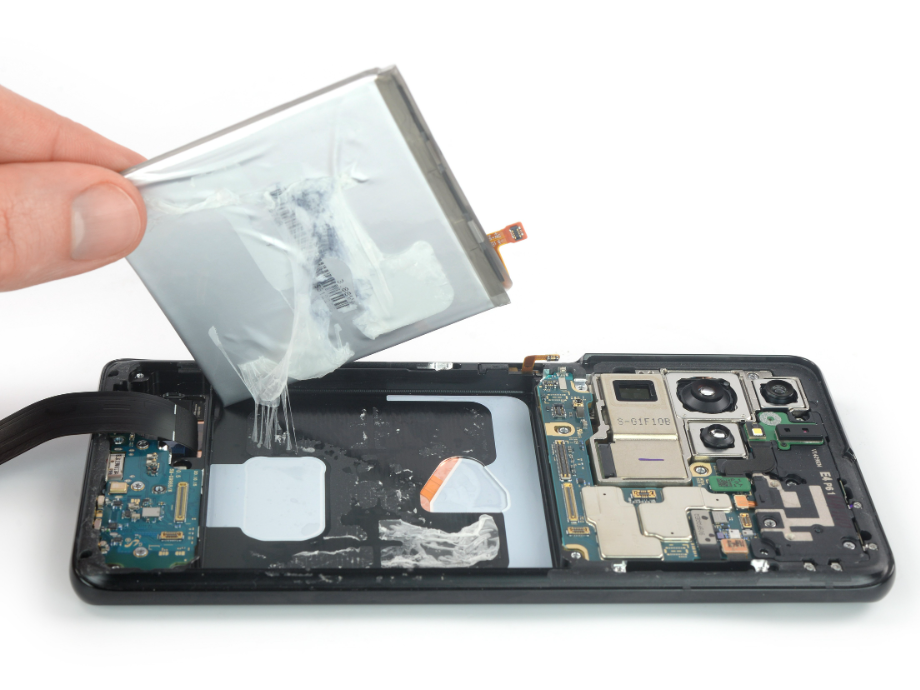The Problem With Glue In Our Devices (original) (raw)
Glue can fix a lot of everyday problems. It’ll stick a broken vase back together, help you make a sweet collage, and it often keeps your electronics in one piece. Key word: one piece. Adhesives aren’t very forgiving. Maybe your phone took an ill-fated dip in the pool and now some parts need to take a purposeful dip in isopropyl alcohol (we suggest you skip the rice bags). Maybe you’ve cracked your screen, or your battery has finally kicked the bucket.
Whether it’s normal wear-and-tear or an accident, you will inevitably need to get the thing open to fix it. And when that day comes you may find yourself carefully applying isopropyl alcohol and suction cups to a stubborn layer of adhesive—while cursing whoever designed the thing.

Why Are Electronics So Full of Glue?
Adhesives are used in most of our electronic devices—sometimes excessively so. They serve a few primary purposes: durability, waterproofing, and of course, keeping everything together.
Let’s pause for some definitions: Technically, most electronics “adhesives” are not “glue.” An adhesive is something that causes adhesion, sticking things together. “Glue” can be used to mean any kind of strong adhesive. But in some technical contexts, the term specifically means adhesives that start out liquid but cure over time to solidify and form a bond. The adhesives in devices are typically “pressure sensitive adhesives” (PSAs) that come pre-formed and bond to materials in response to pressure. The glue dots that you would use on crafts as a kid are a type of PSA; they’re pre-portioned and formed and to use them all you need to do is firmly press the dots down where you want them. Liquid glues are used less often in electronic devices than PSAs. Colloquially, though, we tend to use the terms interchangeably. They’re all sticky substances that get in the way of our repairs.
Okay, they’re annoying for repair, you knew that. But are these adhesives at least doing all that they’re advertised to be doing in your device? Well, yes and no.
Adhesives for Durability

An iPhone (left) and Fairphone 4 (right) have comparable sizes but far different battery removal processes. Fairphone doesn’t use adhesive—so you can remove the battery in seconds.
On the durability front, adhesives can to some degree mitigate shock and are sometimes used to reinforce your device, protecting it from damage. There are some parts of your phone where this makes a lot of sense, like dampening vibrations from speakers. It’s good to have that built-in precaution in a specific place for a specific function that customers are expected to use often.
But glues aren’t only used in those targeted, necessary ways. They’re used all throughout devices these days because they streamline manufacturing, mitigate materials prices, and make it possible to keep everything together without sacrificing thin, sleek designs. In service of those design trends, glued-down components in many modern phones do double duty. Batteries, for example, can strengthen the structural integrity of a very thin design. At first glance, it’s a smart way to consolidate functions in a small space. But maybe a device so thin that it has to rely on a foil pouch full of flammable material for its structural integrity is too thin. The Fairphone 4 is able to secure its hard-case battery without any adhesive and clocks in at just 3 mm thicker than the iPhone 13—and it passed the JerryRigEverything bend test with flying colors.
As far as fall damage or excessive jostling from activities like mountain biking or motor sports go, you shouldn’t rely on the built-in mitigation techniques like adhesives to save your phone. You’ll want equipment like covers and vibration-dampening mounts to protect all of the delicate components in there from strong vibrations. The way devices are being advertised doesn’t necessarily make all of that clear. If glue did such a great job at shock absorption then we wouldn’t see so many devices suffering from cracked screens and other drop damage. Glues have their place in device design for durability, but that doesn’t make a good argument for putting it everywhere.
Adhesives as Waterproofing

These ads are saying “take a dip” when legally they mean “don’t try this at home.”
When it comes to waterproofing, adhesives can be very effective for a while, but they have a limited lifespan. Once it’s out of the box a device is subject to any number of environmental conditions, both chemical and physical, that degrade its adhesives. Many phone manufacturers themselves admit that their devices aren’t meant to be used in water, despite how they’re advertised. Noticing a trend? If they were so confident about the feature maybe they’d include liquid damage in their warranties.
In the last decade or so people have begun to keep their phones for longer before replacing them, often for more than two years. That’s a win for the environment and the fight against e-waste. However, manufacturers are still designing their devices for short lifespans, so components like your battery and features like waterproofing may start dying before you want to upgrade. And here’s the real kicker: just because your phone’s glue has stopped holding water out doesn’t mean it will let you in. The worst of both worlds: neither waterproof nor easily repaired.
The worst of both worlds: neither waterproof nor easily repaired.
Want to get inside the device, fix what water damage you can, and regain that water resistance? You’ll have to remove and replace your adhesive—a task that may require heating, prying, slicing away, and dissolving the existing glue, all while avoiding contact with other components that may be damaged in the process, and then successfully applying the new adhesive. It’s doable, but it sure ain’t fast. On a 2020 iPhone model, that process can take up to two hours of disassembly, an hour to clean up corrosion damage from liquids, and then another hour of application to replace the adhesive. Not an easy fix. Especially for something advertised as a feature you wouldn’t have to worry about.
Safety without Stickiness
When divorced from the issues of excessive gluing, waterproofing is a great feature to have in electronics. If it works it helps prevent liquid damage so that you don’t have to race against time to save your device. But using adhesives to achieve that waterproof seal slows down the critical time between an unlucky breach happening and you starting your repairs. Those ads featuring submerged smartphones at beach days and pool parties don’t help. They can create an expectation that using a device that way is risk-free when it simply isn’t. The false sense of security can lead a phone to an early death.

There’s no time to waste prying when you’ve got corrosion like this to deal with
There are alternatives, though. Manufacturers could use screws to hold devices together and use them in concert with hydrophobic coatings and water-tight replaceable gaskets in problem areas. Both of these methods could be combined to create resistance against accidental spills and quick dips. And at times when we purposefully take our devices with us to risky places—a beach, pool, shower, or tub, for example—we can swap our usual cases for waterproof ones to bolster those protections.
Personally we’re hoping for some more creative uses of water- and dust-resistant meshes commonly used to protect vulnerable openings like speakers. Increasing repairability without sacrificing water resistance may require some new innovations but they could save us all countless hours of heating and prying.
Glue Gums up Repair and Recycling
The adhesive problem isn’t just about a false sense of security or failing seals leading to damaged devices. It’s also that the nature of adhesives and their liberal application by manufacturers lengthens and complicates just about any repair. Common fixes like cracked screens, battery swaps, and broken buttons can all require slow, painstaking glue removal. This is a frustrating hurdle to DIYers who want to extend their device’s lifespan. Battery removal has the extra bonus of being a fire risk, especially when you have a particularly tough glue to contend with.
Foil-wrapped Batteries Foil Repairs

Our trusty, high-tech friend: the battery bucket
The current standard of flammable lithium-ion batteries (or LIBs) being glued down in foil pouches rather than the hard cases that clicked into place in years past is not a very user-friendly one. We’re not gonna lie: pulling out a well-adhered battery can be risky if it’s damaged in the process. Puncturing the battery, dropping it, and other types of damage can trigger a reaction in the battery called “thermal runaway” wherein the battery short circuits, heats up, and catches fire.
When we have to pry out a battery, as iFixit CEO Kyle Wiens put it for Wired, “We pray for protection from a cross-section of deities when doing this, and keep a bucket of sand and fire extinguisher handy.”
Battery Recycling Blues
All of these problems for individual DIYers are compounded for professional e-waste recyclers who deal with millions of these devices at the end of their lives. When a device can no longer be repaired, these pros are our only hope for safe waste processing and recovering material for future use. And they have to get through that glue to do it.
Recycling staff need to harvest batteries from hundreds of the world’s trashed phones daily. Adhesives make that harder.
Again, glue does a great job at keeping your device in one piece—but recyclers need to break it apart to do their jobs. You can’t harvest materials from a sealed phone, and you sure don’t want the battery in your shredder with the rest of the device body (unless you want your whole recycling plant to catch fire). We individual phone owners may need to perform a battery replacement once every couple of years, but recycling staff need to harvest batteries from hundreds of the world’s trashed phones daily. Since the adhesives inside devices can make a safe battery removal such a long ordeal, each of the millions of devices we throw away yearly becomes a time sink for large-scale recycling operations.
Time is money, and if recyclers can’t afford it, these electronics will instead end up in a warehouse somewhere, or worst case, the landfill. There, an abundance of fuel and exposure to the elements can increase chances of fires and chemical leakage.
If we make these devices easier to repair by reducing adhesives, it would do more than prolong device life and slow the rate of trashed phones. It would also make end-of-life battery recycling far easier. The easier repair and recycling get, the more accessible and common they will become, and the fewer battery fires we’ll see in garbage trucks and landfills.
Manufacturers Could Make Battery Replacement Safe
Manufacturers like to point to the risk of thermal runaway as evidence that customers shouldn’t be allowed to open up their own devices. Whenever the Right to Repair comes up for a public hearing, they hire lobbyists to give long, fear-mongering descriptions of battery fires. They send letters to lawmakers saying that if they’re forced to sell batteries to customers, they’ll be opening themselves up to lawsuits when customers inevitably hurt themselves.

Opening up a Fairphone 4…
Of course, this doesn’t have to be inevitable at all. Manufacturers have the power to change the design of their devices. They can make battery replacement exactly as easy as it should be—that is to say very. Replacing the battery in the Fairphone, for instance, is a four-step process that requires no tools—just your fingernail. There’s a reason it scored a 10/10 on our Repairability scale.
We’re not the only ones calling on manufacturers to design less risky batteries. As the FTC pointed out in their “Nixing the Fix” (PDF) report, “Manufacturers can choose to make products safer to repair when considering a product’s design. For instance, making lithium-ion cellular pouches easily replaceable would decrease the likelihood of puncture during replacement and thus thermal runaways.”

… Versus a Galaxy S21
All that said, we’d venture to say that the risk of thermal runaway is highly overplayed. Since Apple released their Self Repair program and started selling iPhone batteries directly to consumers, there have been a lot of complaints—about the parts being paired to a single phone IMEI, the credit hold required to rent the tools, and the ease of damaging your screen permanently while trying to remove it. But huh, weird, no reports of battery fires. You might think, given how much of manufacturers’ anti-Right to Repair arguments were based on that risk, that reports of battery fires would spread like, well, wildfire as soon as untrained customers got their hands on replacement batteries. Instead, it’s just led to more people complaining about battery adhesive.
Replaceable Batteries are Good For Manufacturers
Despite all of the bluster about leaving these things to the professionals, sometimes the manufacturers themselves are the ones making big, dangerous mistakes—mistakes aggravated by their own repair-unfriendly designs. When Samsung’s (now infamous) Galaxy Note7 devices began bursting into flames the only immediate course of action Samsung could offer to their customers was to power their phones down and return them as soon as possible.
In Wired, Kyle Wiens commented on the issue, “If Samsung could tell people to remove the battery, it probably would. But it can’t. Because of course it glued the battery down.” So instead of perhaps finding a way to replace the faulty batteries, Samsung had to replace every phone in its entirety. The recall cost them billions of dollars and some pretty bad press. It’s also worth noting that some phones were replaced twice, since the replacement Note7 devices were also prone to failure. A better design could have saved all parties involved from that headache. Whether manufacturers admit it or not, making self-repair easier can be in their own best interest as well as their customers’.
An Adhesive Alternative
So what are our alternatives to gluing our devices together? Well, we can always look to our past.
A Galaxy S4 (left) requires three steps and no tools to remove a battery. The newer Galaxy S21 Ultra (right) takes 27 steps and a variety of implements.
Long Live Reusable Fasteners
Before there was excessive gluing tech relied more heavily on screws (ideally standard ones you would have a driver for) to keep things in place. And before foil-wrapped batteries there were hard cases that could be pulled out barehanded without need for a heat pack, suction cup, or isopropyl alcohol. But ultra-thin devices are the current rage and changing the tide back in favor of hard cases and screws won’t be easy. At the very least, as a stopgap on the road to a fixable future, we can make the status quo a little easier to manage.
Better Adhesives
If there’s any glue we’d invite to our birthday party, it’d be stretch release adhesives. What are they? They’re glues with a great grip that lose tackiness when pulled by their built-in tabs. Think about the Command Strips that you would use to hang a picture on the wall without nails. Now make it tiny and put it under your phone battery. Result: you can get it out with a careful pull instead of heat packs, prying tools, and careful alcohol application.
The pull tabs aren’t perfect. They can’t make foil-wrapped LIBs as easy or safe to remove as hard case batteries, and they require some inventive arranging to leave enough space to pull the tabs at a correct angle—plus the strips get brittle over time. But sometimes only adhesive will do, and these strips work for your speakers, your batteries, and even your screens. And if we can make heating and prying plan B, instead of the default, that’s a win.

Maybe someday the EU will require smarter battery replacement procedures. Or we may see another Note7-esque disaster that will make a removable battery a small inconvenience to mitigate the ensuing PR nightmare.
Until then, the onus is on us to vote with our dollars when we buy our tech. Pick something more repairable than the alternatives—then skip the next upgrade and replace your battery instead. Maybe even contact the brand you’re buying from to let them know that their safer design choices were a deciding factor when buying their product. If good old common sense, sustainability, and increased safety don’t speak to manufacturers, we can always count on our money to speak a little louder.

